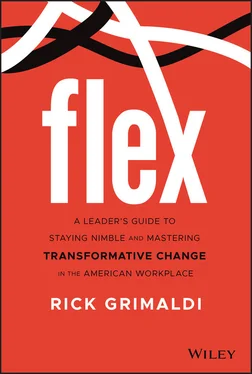It's undeniable that summers will grow longer, wildfires will become more common, and sea levels will continue to rise. In the United States specifically, climate forecasters anticipate shorter winters and longer summers in the Northeast with a decline in species that support important fisheries. They expect higher health risks due to food from contaminated waters in New England's rivers, canals, and coasts. 15
More than half of major cities in the Southeast are experiencing worsening heat waves. In the Midwest, a rise in climate-related ground-level ozone is expected to cause an avalanche of premature deaths. Expect more lung disease and higher rates of illness for the elderly, too. More than a quarter of US agriculture comes from this region, but the higher temperatures will likely also mean declining crop yields. 16
Droughts and wildfires in California and the Southwest means forests there are emitting more carbon into the atmosphere than they used. And these greenhouse gas emissions predict a tripling of the number of large wildfires. Meanwhile, ocean waters will warm California coastal waters between 4°F and 7°F by 2100.
In the Northwest, these greenhouse gas emissions will likely cause winter warming, decimating fish populations and closing fisheries. Mountain snowpacks will melt increasing wildfires. Alaska is actually warming faster than any other state. 17
And so it goes. On and on. What does it all mean?
Aside from the very real and imminent toll that these conditions will have on humans as a species, the effect of climate change on the business world is potentially immeasurable. And yet, emissions fell in China by 25% with the COVID-19 lockdown there. Pollution in New York City was down by 50% due to its containment measures. 18
Is it possible the world can rally long term, as it seemingly did during the pandemic, when threats feel less urgent? Even if we somehow come together soon as one people to address our carbon emissions effectively—to stop or reverse climate change—it's undeniable that much damage has already been done. Sea levels will continue to rise, which will crowd out the populations in low-lying areas that will flood.
But aside from fundamentally changing the way we live, climate change will also change how we do business and engage in commerce. Just as COVID-19 brought once unthinkable new realities to daily life—such as mask wearing in public and possibly the end of the hand shake—so, too, will climate change affect the energy we use, the materials we build with, and how we invest. It will also give rise to new industries and ultimately a green economy . . . all important ways that the world of work is changing.
As blogger and technology evangelist Robert Scoble once noted, “Change is inevitable, and the disruption it causes often brings both inconvenience and opportunity.” 19 As you will see, history is replete with organizations that failed to see change as a chance to evolve. It's also full of visionary organizations that fought back their fears to seize new opportunity.
Those who continue to do business as usual despite the storm of change will become disrupted. They will fade into obscurity as savvy new organizations—disruptors—take their place . . . winning over the customers and employees of those other companies with a responsive new approach to the world around them.
Companies that flex own the future, as you will see.
1 The current pace of change is unprecedented in the history of the world. That's creating a pressure-cooker environment in the American workplace.
2 Minority populations are rapidly taking the place of the Caucasian majority of the past. Plus, millennials are taking over. Successful organizations will use inclusive hiring and engagement practices or lose the war on talent if they provide only lip service to diversity initiatives instead.
3 Our system of education is out of step with the ways the world of work is changing and so is not meeting critical needs of employers for skilled workers. K–12, high school, college, and vocational training must undergo a radical shift to keep America competitive in the global marketplace.
4 The way we communicate is changing due to both generational preferences and technological innovation. Misaligned communications are resulting in a dangerously conflict-avoidant work culture.
5 Climate change will change how we do business, and affect energy use, building materials, and how we invest. Ultimately, it will drive the adoption of a green economy and, perhaps, global cooperation.
1 1. Frey, William H. “The U.S. Will Become ‘Minority White’ in 2045, Census Projects.” Brookings Institution. March 14, 2018. https://www.brookings.edu/blog/the-avenue/2018/03/14/the-us-will-become-minority-white-in-2045-census-projects/
2 2. Teare, Gené. “Study of Gender Diversity in Private Company Boardrooms.” Crunchbase.com. December 11, 2019. https://news.crunchbase.com/news/2019-study-of-gender-diversity-in-private-company-boardrooms/
3 3. United States Census Bureau. “Older People Projected to Outnumber Children for First Time in U.S. History.” March 13, 2018. https://www.census.gov/newsroom/press-releases/2018/cb18-41-population-projections.html
4 4. Ibid.
5 5. Schaeffer, Katherine. “U.S. Has Changed in Key Ways in the Past Decade, from Tech Use to Demographics.” Pew Research Center. December 20, 2019. https://www.pewresearch.org/fact-tank/2019/12/20/key-ways-us-changed-in-past-decade/
6 6. Centers for Disease Control National Center for Health Statistics. “Trends in Fertility and Mother's Age at First Birth Among Rural and Metropolitan Counties: United States, 2007–2017.” National Vital Statistics System, 2007–2017. https://www.cdc.gov/nchs/data/databriefs/db323_table-508.pdf#1
7 7. Grawe, Nathan. “Americans Are Having Fewer Kids. What Will That Mean for Higher Education?” Harvard Business Review. October 17, 2019. https://hbr.org/2019/10/americans-are-having-fewer-kids-what-will-that-mean-for-higher-education
8 8. Grawe, Nathan. “Demographic Changes Pose Challenges for Higher Education.” Econofact.Org. July 29, 2018. https://econofact.org/demographic-changes-pose-challenges-for-higher-education
9 9. Fry, Richard, and Paul Taylor. “Hispanic High School Graduates Pass Whites in Rate of College Enrollment.” Pew Research Center. May 9, 2013. https://www.pewresearch.org/hispanic/2013/05/09/hispanic-high-school-graduates-pass-whites-in-rate-of-college-enrollment/
10 10. Ibid.
11 11. Gross, Ashley, and John Marcus. “High-Paying Trade Jobs Sit Empty, While High School Grads Line Up for University.” All Things Considered. NPR. April 25, 2018. https://www.npr.org/sections/ed/2018/04/25/605092520/high-paying-trade-jobs-sit-empty-while-high-school-grads-line-up-for-university
12 12. Erard, Michael. “How the English Language Has Evolved Like a Living Creature.” Science. November 1, 2017. https://www.sciencemag.org/news/2017/11/how-english-language-has-evolved-living-creature
13 13. XPressPlanet. “7 Best Technological Inventions of 21st Century.” June 30, 2017. http://xpressplanet.com/greatest-technological-inventions/
14 14. Stillman, Jessica. “Breakthrough Technologies That Are About to Change the World.” Inc. Aril 25, 2017. https://www.inc.com/jessica-stillman/10-breakthrough-technologies-that-are-about-to-change-the-world.html
15 15. Kaufman, Ellie, Ross Levitt, Rene Marsh, and Gregory Wallace. “How Climate Change Will Impact the US.” CNN. November 27, 2018. https://www.cnn.com/2018/11/27/health/climate-change-impact-by-region/index.html
16 16. Ibid.
17 17. Ibid.
18 18. Henriques, Martha. “Will Covid-19 Have a Lasting Impact on the Environment?” BBC. March 2020. https://www.bbc.com/future/article/20200326-covid-19-the-impact-of-coronavirus-on-the-environment
Читать дальше












